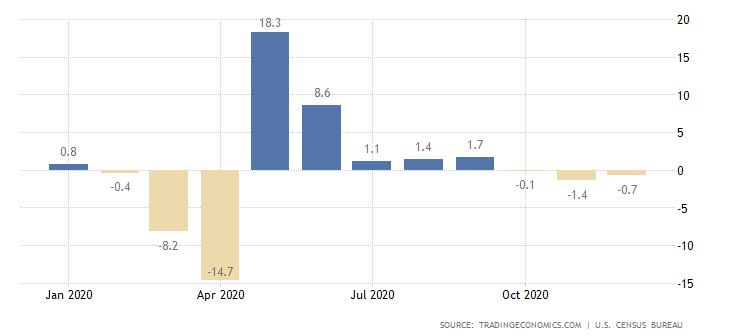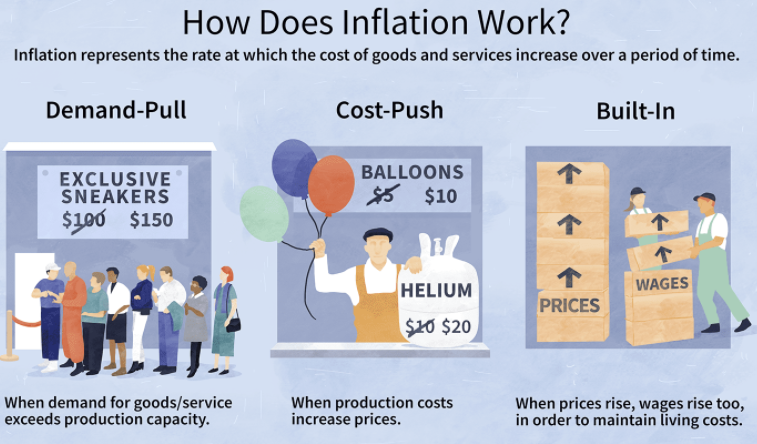
- Currencies Reverse Despite New Highs for Stocks
- #USD Rallies on Stronger Empire State Survey but Retail Sales a Risk
- #EURO Gives Up Gains Despite Stronger ZEW
- #AUD Lower on Dovish RBA Minutes
- #GBP Traders Look Ahead to Stronger CPI
- #CAD Sells Off Despite Prospect of Stronger Inflation Data
U.S. traders came back from their long weekend on Tuesday ready for a busy trading week. They drove stocks to fresh record highs which should have coincided with a weaker U.S. dollar (#USD). However stronger than expected manufacturing activity in the New York region boosted risk appetite. Looking ahead sustainability of the dollar (#USD) and equity market (#DOW) rally hinges on a retail recovery.
The end of 2020 was particularly tough for retailers as consumer spending dropped three months in a row. Economists are looking for tomorrow’s retail sales report to show a rebound in January but with wage and job growth slowing, this forecast may be tough to meet. If consumer spending falls for four straight months, vaccine optimism may not be enough prevent a correction in stocks. Given the direct relationship between stocks, risk appetite and currencies, a sell-off in equities would mean losses for #EURO, sterling and commodity currencies accompanied by gains in the U.S. dollar (#USD), Japanese Yen (#JPY) and Swiss Franc (#CHF).
FOMC minutes are also due for release Wednesday afternoon. Hiring has been slow but we expect businesses to be optimistic. The FOMC minutes should be mildly positive for the greenback but retail sales will be the primary driver of FX flows tomorrow.

Euro (#EUR) ended the day lower against the U.S. dollar reversing shortly before the U.S. equity market open. Eurozone data was better than expected with Germany and the Eurozone ZEW survey ticking higher. According to the President of the ZEW institute, “The financial market experts are optimistic about the future. They are confident that the German economy will be back on the growth track within the next six months.” However the current conditions assessment was weaker in Germany which means the economy is performing worse than they initially anticipated. Eurozone fourth quarter GDP was revised slightly higher but better than expected U.S. data and a snapback in the dollar drove EUR/USD (#EURUSD) down to 1.21.
#GBP/USD hit a fresh 35 month high at the start of Asian trade before pulling back during the NY session. Inflation is in focus for the UK with January CPI data scheduled for release tomorrow. Inflation is rising across the globe and the UK will be no exception. The latest PMI reports confirmed that prices are rising in the manufacturing and services sector. Of all the major economies, the U.K.’s vaccine rollout has been the most successful which will pay dividends for growth in the months ahead. So while sterling may be down against the dollar, we expect it to outperform other major currencies.

All three of the commodity currencies gave up earlier gains to trade lower against the U.S. dollar. The Canadian dollar (#CAD) fell the most on the back of lower prices and a stronger U.S. dollar. Like the U.K., inflation data is scheduled for release tomorrow. The price component of IVEY PMI surged signaling stronger price pressures in Canada. The Australian dollar (#AUD) was hit by RBA minutes which showed the central bank looking to maintain significant monetary support for some time. A 3 day lockdown and weaker New Zealand service sector activity drove #NZD/USD lower.





